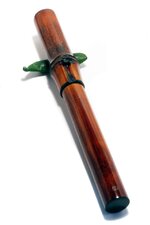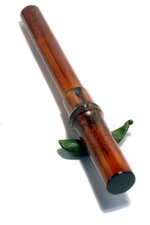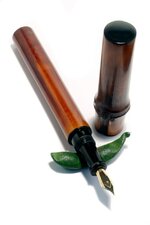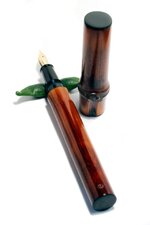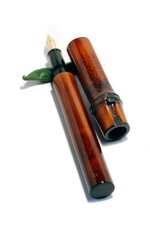manupropria
Member
This week I felt like playing around with some bamboo pieces.
It is a pretty large bamboo pen. Section and end pieces made from ebonite. Finish "fuki-urushi" rubbing ki-urushi into the surface.
Best,
Martin
It is a pretty large bamboo pen. Section and end pieces made from ebonite. Finish "fuki-urushi" rubbing ki-urushi into the surface.
Best,
Martin

